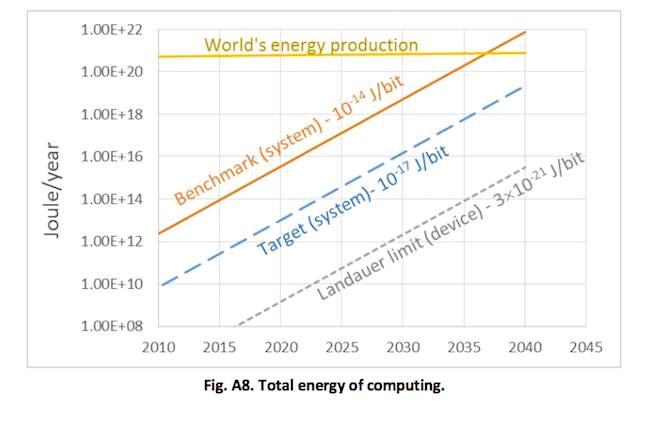![]()
A grim report published by the Semiconductor Industry Association asserts that the future of Moore’s Law is now under assault from both technical, as well as existential threats, and representing the most austere assessment to-date.
As the semiconductor industry’s primary lobbying group in the United States, the Semiconductor Industry Association had published its decades-old International Technology Roadmap for Semiconductors (ITRS) on a biannual basis since the 90s, back when there were 19-leading chip vendors. Now, that number has consolidated to just four — Intel, TSMC, Samsung, and Global Foundries — and there’s simply too much road to cover beyond the initial scope of the report. What’s more, industry participation has dwindled, with the largest players creating their roadmaps. July’s ITRS issue is the final issue.
Titled ITRS 2.0, the naming convention of the group’s latest filings argues that improvements in computing are no longer driven from the bottom-up, but require a top-down approach focused on applications to initiate chip design innovation. The new roadmap describes how computing is facing multiple crunch points beyond merely keeping Moore’s Law in forward momentum. Economics, rather than physics, have become Moore’s Law primary inhibitor; the further below 10 nanometers transistors shrink, the less economically desirable it is for companies to manufacture them. Come 2020, chip manufacturers will turn toward other methods of boosting density, placing a premium on vertical geometry and multi-layer circuitry.
Electricity and the growth of the world’s power grid present an even broader concern. The ITRS finds that the existing computing infrastructure already taxes a significant portion of the world’s overall power, and the current growth trajectory is self-limiting. By 2040, computing will require more electricity than the world can generate under current methods.

A quarter of a century ago, establishing a unified consensus of industry priorities was significantly simpler, requiring analysts to study a few key criteria: microprocessors, memory, storage, and communication. Today, critical issues include intelligent storage, real-time communication; multi-level and scalable security; manufacturing; “insight” computing; and the Internet of Things. Shifting focus from feature size and clock speed to application has made it so that big customers like Apple, Samsung, and Qualcomm are calling the shots, rather than the semiconductor companies themselves. But without industry participation and a growing to-do list, the ITRS cannot set tangible research priorities without help.
“The U.S. semiconductor community—including government, industry, and academia—will be able to take these critical steps only through partnership and focused funding. A National Computing and Insight Technology Ecosystem initiative will support the development of an aggressive research agenda and a leap forward in new knowledge. Together, the community must exploit the rapidly developing opportunities to reboot, expand, and extend the IT revolution, and thereby ensure the United States of robust, long-term information technology leadership.”
Read the latest International Technology Roadmap here .
Advertisement
Learn more about Electronic Products Magazine





